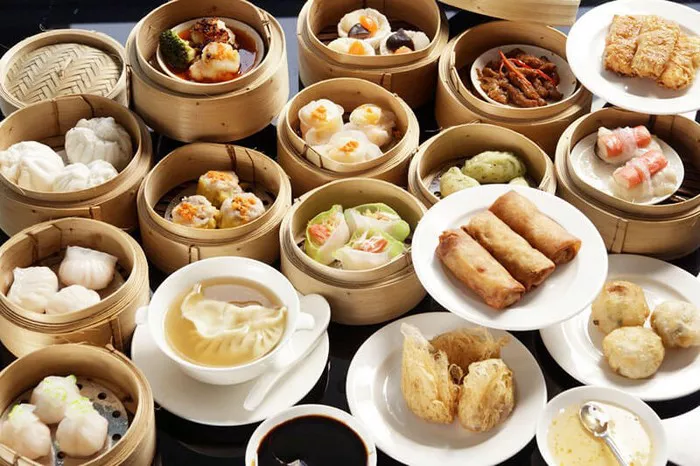When dining out at a Chinese restaurant, it’s easy to get overwhelmed by the variety of dishes, each offering a unique combination of flavors and textures. However, if you’re mindful of your calorie intake, you may wonder which options are the best choices. This article delves into how to identify lower-calorie dishes and offers practical tips for making healthier decisions without sacrificing taste.
SEE ASLO: What Chinese Dishes are Worth Recommending?
Understanding Chinese Cuisine’s Calorie Variations
Generalizations: Chinese cuisine is incredibly diverse, with dishes varying widely in calorie content based on preparation methods, ingredients, and regional influences. Some dishes, like those heavy on fried foods and rich sauces, can be calorie-dense, while others offer lighter, more nutrient-dense options.
Focus on Techniques: The calorie content of a dish can be significantly influenced by the cooking method. Steamed and boiled dishes typically have fewer calories than fried ones. For example, a plate of steamed vegetables with lean protein is much lighter than a dish featuring deep-fried meats. Additionally, portion size plays a crucial role—an otherwise healthy dish can become calorie-laden if served in large quantities.
Low-Calorie Dish Recommendations
Appetizers:
Steamed Dumplings: These are a great starter option, especially when compared to their fried counterparts. The steaming process retains the flavor while keeping the calorie count low, making them a satisfying yet light choice.
Spring Rolls (Vegetarian): Vegetable spring rolls, especially when not deep-fried, are another excellent appetizer. They are packed with fiber and vitamins from the vegetables and are generally lower in calories compared to meat-filled versions.
Edamame: This simple dish of steamed soybeans is high in protein and fiber, which helps you feel full with relatively few calories. It’s a nutritious option that’s naturally low in calories.
Main Courses:
Stir-fries: Opt for stir-fries with lean proteins like chicken or tofu. These dishes are typically low in calories, especially when packed with vegetables and prepared with a light sauce. The combination of protein and vegetables makes them both filling and nutritious.
Noodle Dishes: Choose noodle dishes made with lighter options such as rice noodles or wheat noodles. Vegetable-heavy noodle dishes tend to be lower in calories while still providing a satisfying meal.
Soup-Based Dishes: Soup dishes like wonton soup or a simple vegetable broth are often low in calories. These soups are not only filling but also hydrating, which can help control appetite.
Considerations for “Low-Calorie” Dishes
Portion Control: Even the healthiest dish can become high in calories if eaten in large portions. Many Chinese restaurants serve generous portions, so consider sharing a dish or packing half to take home.
Fried vs. Steamed: Fried dishes typically contain more calories due to the oil used in cooking. Opt for steamed or boiled versions of dishes to significantly reduce calorie intake.
Sauce Choices: Sauces can be a hidden source of extra calories, especially those rich in oil or sugar. Asking for sauces on the side allows you to control the amount you use. Lighter sauces, such as soy sauce or ginger sauce, are often better options.
Tips for Choosing Low-Calorie
Ask About Preparation Methods: Don’t hesitate to ask how a dish is prepared. Knowing whether it’s fried, steamed, or stir-fried can help you make a more informed choice.
Avoid Sauces: If possible, ask for your meal without sauce or with the sauce on the side. This allows you to add just enough for flavor without consuming unnecessary calories.
Choose Lean Proteins: Lean proteins like chicken, fish, tofu, or seafood are typically lower in calories than fatty meats like pork or beef. These proteins also provide essential nutrients without the extra fat.
Focus on Vegetables: Dishes that include a lot of vegetables, particularly leafy greens, are generally lower in calories and higher in fiber and nutrients. They help fill you up while keeping your calorie intake in check.
Portion Control: Consider sharing dishes with others or taking half of your meal home to avoid overeating. This strategy helps you enjoy a variety of dishes without consuming too many calories in one sitting.
Considerations
Dietary Restrictions: If you have dietary restrictions, such as gluten-free, vegetarian, or vegan preferences, many Chinese restaurants can accommodate these needs. Dishes like vegetable stir-fries, tofu-based entrees, and rice-based meals are often good options.
Restaurant Specifics: It’s important to note that calorie content can vary between restaurants due to differences in preparation methods, portion sizes, and ingredients used. Don’t hesitate to ask questions about specific dishes at the restaurant you’re visiting.
General Health Guidelines: Remember that while it’s helpful to be mindful of calories, overall health is about balance. A registered dietitian or healthcare professional can offer personalized advice based on your dietary needs and goals.
Conclusion
Navigating a Chinese menu while keeping calorie count in mind can be a rewarding experience if you know what to look for. By focusing on steamed, stir-fried, and soup-based dishes, choosing lean proteins, and being mindful of portions and sauces, you can enjoy a delicious meal that aligns with your health goals. Whether you’re dining out or ordering in, these tips can help you make choices that satisfy both your palate and your nutritional needs.
Related Topics:


























